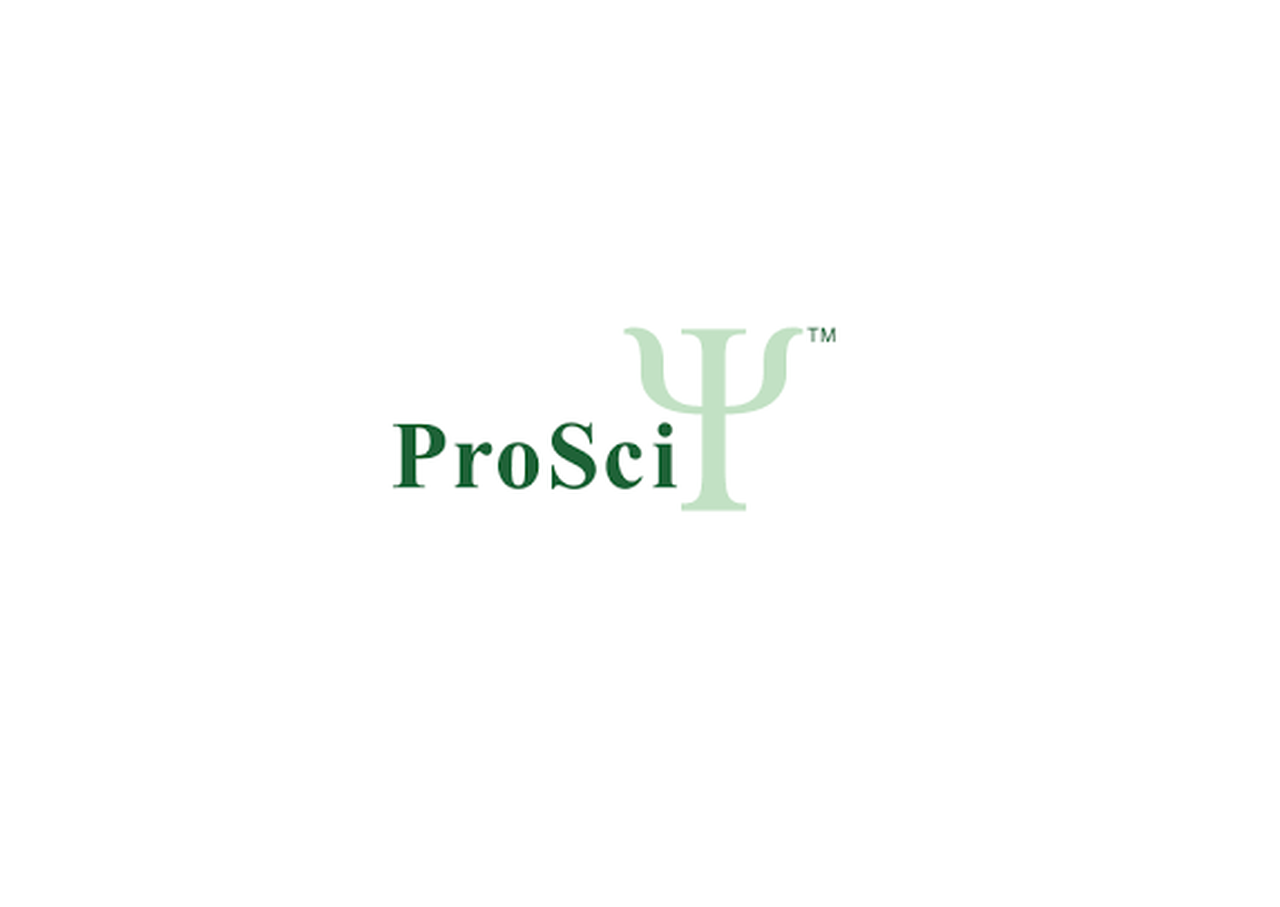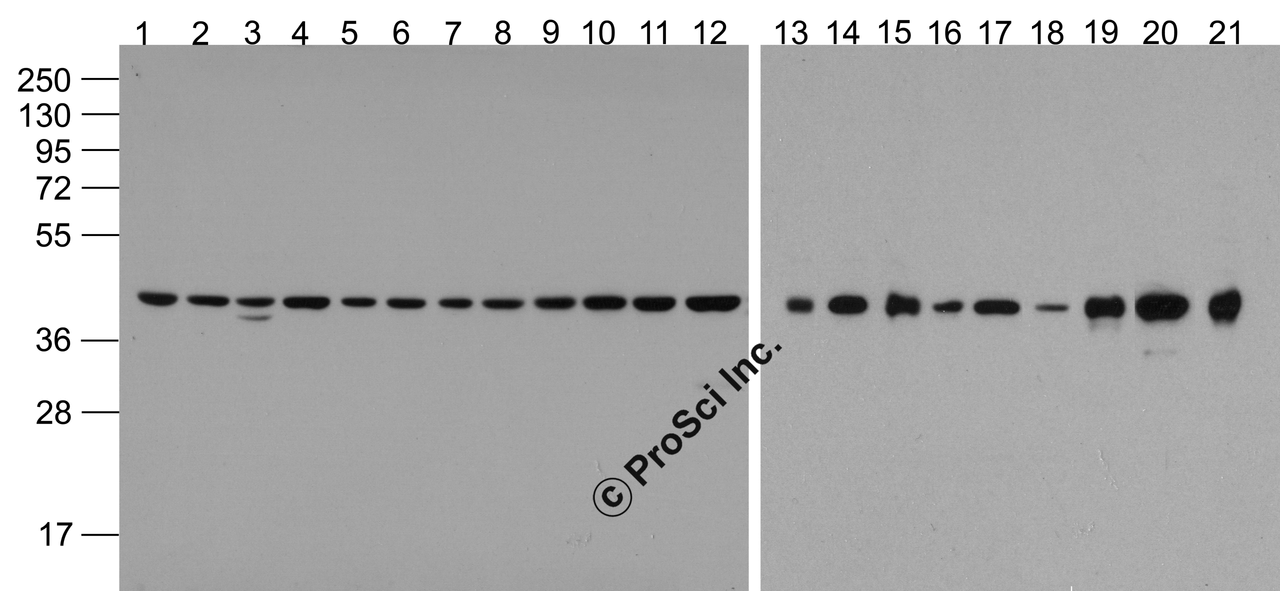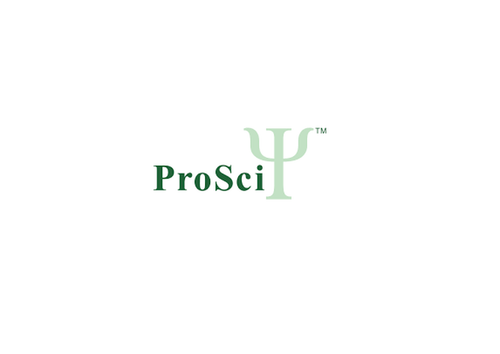Product Description
beta-Actin Antibody (HRP) | 3779-HRP | ProSci
Host: Rabbit
Reactivity: Human, Mouse, Rat, Rabbit, Chicken, Drosophila
Homology: N/A
Immunogen: HRP-Beta-Actin antibody was raised against a synthetic peptide containing 16 amino acids near the amino terminus of beta-actin.
Research Area: Homeostasis
Tested Application: E, WB
Application: HRP-Beta-Actin antibody can be used for detection of Beta-Actin by Western blot at 0.5 - 1 μ/ml.
Antibody validated: Western Blot in human, mouse, and rat samples. All other applications and species not yet tested.
Specificiy: HRP-Beta-Actin antibody is human, mouse, rat, rabbit, chicken, and drosophila reactive.
Positive Control 1: Cat. No. 1201 - HeLa Cell Lysate
Positive Control 2: N/A
Positive Control 3: N/A
Positive Control 4: N/A
Positive Control 5: N/A
Positive Control 6: N/A
Molecular Weight: Predicted: 42 kDa
Observed: 42 kDa
Validation: N/A
Isoform: N/A
Purification: HRP-Beta-Actin antibody is affinity chromatography purified via peptide column.
Clonality: Polyclonal
Clone: N/A
Isotype: IgG
Conjugate: HRP
Physical State: Liquid
Buffer: HRP-Beta-Actin antibody is supplied in PBS containing 1% BSA and 0.02% thimerosol.
Concentration: 1 mg/mL
Storage Condition: HRP-Beta-Actin antibody can be stored at 4˚C for three months and -20˚C, stable for up to one year.
Alternate Name: HRP-Actin, Beta-Actin, Actin, Beta actin, b actin
User Note: Optimal dilutions for each application to be determined by the researcher.
BACKGROUND: Actins are highly conserved proteins that are involved in cell motility, structure and integrity, processes that are crucial for tissue development and the development of organism. The actin cytoskeleton is one of the principal drivers of cell motility and is capable of responding to complex signaling cascades. Recent evidence suggests that it may play key roles in regulating apoptosis and aging. Beta actin is one of six different actin isoforms which have been identified. Like GAPDH, beta-Actin is constitutively expressed at high levels in almost all tissues and cell lines making it ideal for use as a loading control marker in immunoblots.
 Euro
Euro
 USD
USD
 British Pound
British Pound
 NULL
NULL










